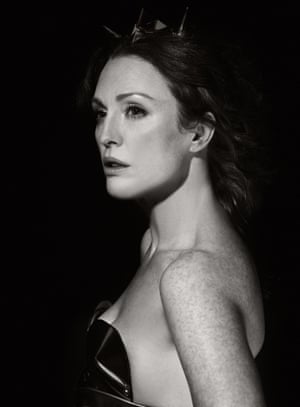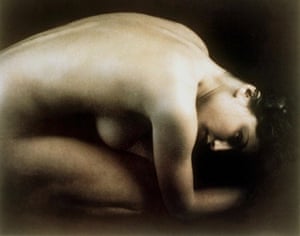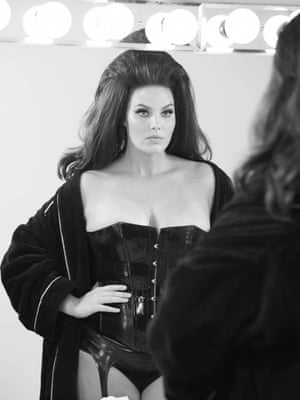
It is an assignment that Kate Moss, who has appeared on the cover of British Vogue 36 times, described as “the best job ever”. Clive Arrowsmith, who has taken portraits of everyone from Michael Caine to the Dalai Lama, likened it to “a knighthood of photography”. Carine Roitfeld, the former editor of French Vogue, and Steven Meisel, who has shot all but one Italian Vogue cover in two decades, recently called their involvement with the title “an honour”. Karl Lagerfeld, who was commissioned to shoot his “dear friend” Julianne Moore as the Greek goddess Hera, commented that “nobody believes in these gods any more, but [these] girls ... are the goddesses of today”.

The publication to which these giants of modern style refer? A soft-porn calendar promoting tyres. The extent to which the Pirelli calendar has been embraced by the fashion industry has been unavoidable, in the wake of 50th-anniversary gala celebrations held in a modern art gallery in Milan and attended by top-flight models, photographers, stylists and designers, and the publication of a new coffee-table book celebrating the half century. The fashion industry, normally intensely snobbish about distancing itself from the fake-tanned, fake-boobed world of commercialised glamour modelling, has nonetheless taken the Pirelli calendar to its heart. (Or perhaps, more accurately, to its bosom.)
Pirelli’s triumph is a masterclass in image management, one that leverages basic instincts in a sophisticated marketplace. Its power lies in the fact that being acknowledged as sexually attractive is a valuable asset to women in the public eye, whereas being seen as sexually available is demeaning. So the deal Pirelli strikes with photographers and models is that they get to be sexy, and Pirelli gets to be classy. A key part of the Pirelli legend is that the calendar is not available to purchase, but sent to a secret list of high-rollers and international public figures. This exclusivity is now entirely academic – the images are widely published on the internet – but it sets a context no less powerful for being imaginary.

At its worst, the Pirelli calendar gives free rein to fashion’s ickiest side. The 2010 calendar, shot by Terry Richardson, is all squeakily waxed young women with Richardson’s signature pool-party slicked-back hair, eating bananas or pretending to lick cockerels. (Seriously.) But Pirelli has been very smart about playing up its illustrious roll call of photographers, from Helmut Newton to Annie Leibovitz, and about balancing the unreconstructed salaciousness of Richardson with artier issues.
Richardson’s calendar was followed by Karl Lagerfeld’s, which with its classical theme and inclusion of a man, and older women, served as a counterweight. Next, Pirelli commissioned Mario Sorrenti, who tempered his full-on nudity with a raft of artistic illusion. Lara Stone’s armpit-flashing, full-frontal pose nodded toHelmut Newton’s composition; a sun-dappled Kate Moss shot to the shadow-play of Fernand Fonssagrives’ beauty photography. In 2013, the photojournalist Steve McCurry – most famous for his portrait Afghan Girl, which appeared on the cover of National Geographic in 1985 – shot the calendar on the streets of Rio, with no nudity at all.

The standard account of modelling nude for Pirelli is unsettling in the way it conflates two very different experiences. The shoot is a high-budget affair, everyone on it is treated – and paid – royally. The female subjects will often describe the experience as “fun” and “empowering” – entirely understandable, when they are describing being cosseted in a luxury location in the company of prestigious photographers and stylists. But that quote about it being “fun” and “empowering” then gets attached to a photo of a woman without her clothes on, and so appears to suggest that simply getting your clothes off for the male gaze is fun and empowering. It’s a neat sleight of hand that sends a strange message to young women who will see the images and the quotes on the internet – which they will, because the calendar has become as much an integral part of the fashion cycle as the Oscars or Glastonbury.
But even if we would like to, it is impossible to dismiss the Pirelli calendar as an outmoded relic. The bald fact is that, if it was naff, it wouldn’t have worked. Its power derives in large part from its style. Unlike Page 3, which long ago fell out of step with current aspirational imagery – and therefore lost relevance – the Pirelli calendar, like it or not, is a reference point for where we as a society are at, in the ever-changing landscape of bodies, sex and desire. The theme for the 2015 calendar is fetish, which translates into a lot of black latex. The Fifty Shades influence seems straightforward – until you consider that the calendar was styled by Roitfeld, whose tenure at French Vogue brought fetishistic imagery back into the mainstream and, arguably, paved the way for the Fifty Shades era. Roitfeld’s calendar, then, serves as a document underlining her own influence. A photo of Joan Smalls in a boxing ring seems to reflect the way the discourse around bodies has changed, with exercise regimes now a central preoccupation.

Because it is shot by high-powered, well-connected creative teams, the calendar does not lag behind fashion in the way that most glamour photography does. On the contrary, this year’s vogue for older women starring in advertising campaigns – Julia Roberts and Donatella Versace for Givenchy, for instance – was perhaps presaged by the appearance of Sophia Loren, aged 72, in the 2007 calendar. The current obsession with bottoms rather than bosoms – see Kim Kardashian, or alternatively turn on commercial pop radio, where you will undoubtedly hear a song about bottoms within ten minutes, max – is reflected in the rise of bottom-emphasising shots. (In the most recent calendar, Ana Ewers on a bike, shot from somewhere around the middle of the back wheel.)
The bodies themselves are remarkably consistent over the years, which makes this year’s cover girl worth noting. Candice Huffine, who has previously been photographed nude by Meisel for Italian Vogue, is the first plus-size model to feature in a Pirelli calendar. The decision to accept the job was, says Huffine, who is a UK size 18, “a no-brainer ... and they put a whip in my hand. It was fun.”


SHARE US →